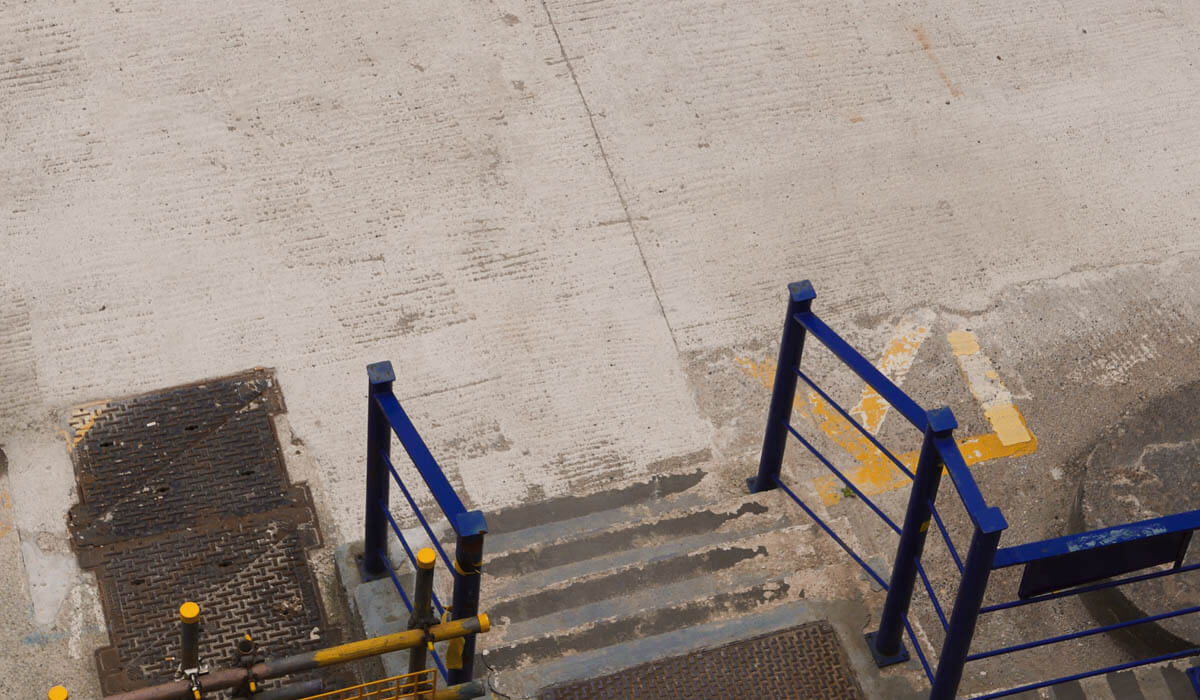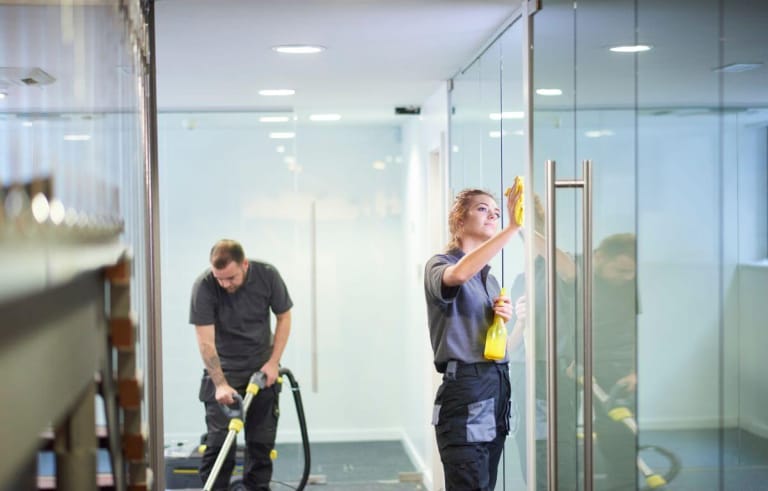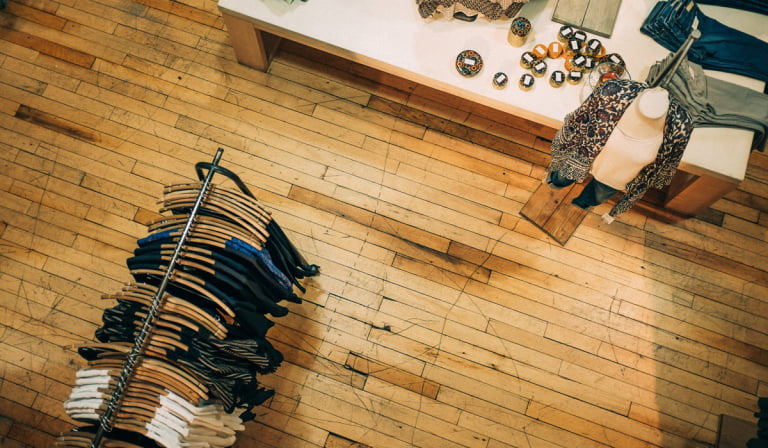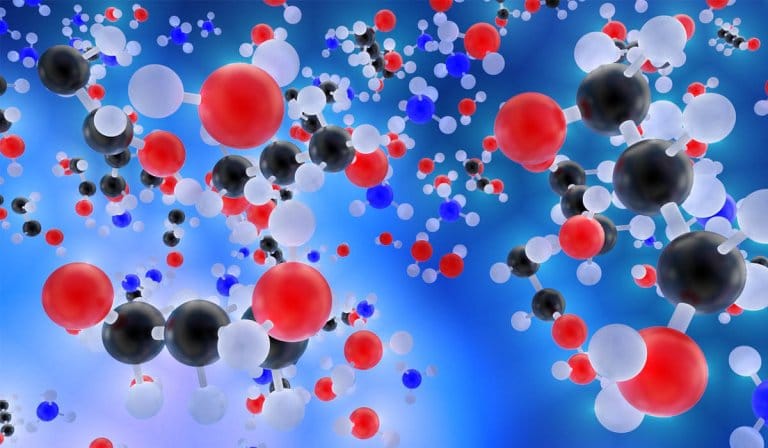Floors are the surfaces most exposed to dirt. As a result of intensive use, they are also damaged, which translates into a shorter service life. In industrial plants, heavily dirty floors not only have an adverse effect on aesthetics, but above all on safety. Regular cleaning of industrial floors is therefore one of the basic duties of the cleaning team. However, the use of aggressive agents may damage the surface. What should industrial floor cleaning look like and what products should you choose?
From the article you will learn:
- What does the floor cleaning process look like?
- What are the types of industrial floors and what are their properties?
- How to clean concrete floors, the most popular industrial surfaces
- How to choose an industrial floor cleaner
Industrial floors – types
Washing industrial floors should be adapted to their type. This way we will avoid the risk of damaging them and increase the effectiveness of cleaning. Concrete floors are most often chosen because they are very durable. However, it is more difficult to keep them properly clean and they are particularly susceptible to dirt. Therefore, alternative solutions are used – resin floors. They have greater aesthetic value and are easier to remove dirt from. Special impregnations are also used to finish industrial floors to protect them against damage.
Cleaning concrete floors
Concrete tends to get dirty quickly. Cleaning a concrete floor therefore requires regular activities to remove current dirt. Cleaning such an industrial floor requires the use of specialized products. Among them is the concentrated Clinex MaxDirt preparation, which removes difficult dirt from waterproof surfaces. Cleaning concrete floors can be done manually or by machine. However, the second variant guarantees time savings and greater effectiveness.
Effective cleaning of industrial floors – what measures?
Due to difficult dirt and its frequent appearance on the surface, you should use agents with a specific purpose. Professional preparations are characterized by high concentration and therefore high effectiveness. However, they must ensure the safety of the surfaces. The low-foaming Clinex MaxDirt preparation is intended for cleaning all waterproof surfaces, such as concrete floors, PVC, artificial and natural stone, but also powder-coated surfaces. Cleaning industrial floors is safe due to its unique formula. It was developed taking into account the properties of all the above-mentioned surfaces.
Mechanical cleaning of industrial floors
Convenience, effectiveness, time saving and the ability to clean a larger surface… mechanical floor cleaning is increasingly used in industry and catering. It is used in production halls, car workshops and industrial processing plants. A machine for cleaning industrial floors requires the use of a specific cleaning agent. Thanks to its low-foaming properties, Clinex MaxDirt can be used for both manual and mechanical cleaning. Self-propelled scrubber dryers are used for this purpose.
Which machine for cleaning floors?
The previously mentioned self-propelled scrubber dryers work best. They are powered by electricity or combustion. They may have one or several scrubbing heads with brushes made of different materials. What they are made of determines their intended use for specific types of floors. The number of scrubbing discs is also important – the more of them, the more precise the cleaning. To get the best results, choose a wet scrubber. They are supplemented with a specialized detergent, such as Clinex MaxDirt, which better removes more difficult dirt.
Thorough cleaning of industrial floors
Cleaning an industrial floor takes place in several stages. We start with thorough cleaning. We remove all dirt from the floor. In this way, the cleaned surface is ready for wet cleaning. This facilitates the actual cleaning process. This applies to both manual and machine washing. Thorough cleaning of industrial floors also increases the effectiveness of the cleaning agent. This is a stage that prepares concrete or other industrial flooring for subsequent stages.
Wet cleaning
Prepare a solution with Clinex MaxDirt by mixing the agent with water. We use proportions of 0.2-10% (20 – 1000 ml of the agent per 10 L of water). We spread the preparation over the surface using a mop or cleaning machine. The brushes from the machine effectively scrub the floor, thus avoiding manual work. Once you have cleaned the surface, you need to remove the dirt. Then we neutralize it, i.e. we spread the water on the floor and then collect it in its entirety.
Summary
- The most popular industrial floors are made of concrete, which is difficult to remove dirt from. An alternative is resin floors
- Cleaning concrete floors requires the use of a strong agent. This material is highly susceptible to any contamination
- An industrial floor cleaner should have a concentrated formula and low-foaming properties
- The best results are achieved with the use of self-propelled scrubber dryers
- Cleaning floors requires first cleaning the surface and then wet cleaning. We use a concentrate diluted with water






